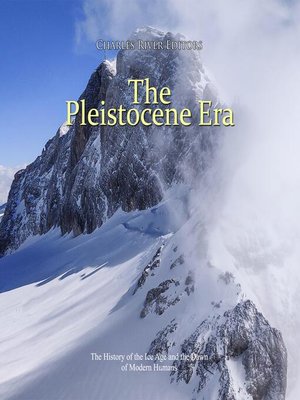The Pleistocene Era
audiobook (Unabridged) ∣ The History of the Ice Age and the Dawn of Modern Humans
By Charles River Editors

Sign up to save your library
With an OverDrive account, you can save your favorite libraries for at-a-glance information about availability. Find out more about OverDrive accounts.
Find this title in Libby, the library reading app by OverDrive.



Search for a digital library with this title
Title found at these libraries:
| Library Name | Distance |
|---|---|
| Loading... |
The Pleistocene spans a period from around 2.5 mya to just over 12,000 years ago, and it was an epoch of enormous change on Earth, mainly characterized by climate changes involving fluctuations between periods of extreme heat and long periods of glaciation. This period is commonly known as the Ice Age despite the fact there were actually a number of separate periods of cold.
Along with the climate challenges, this was also the period that saw the development of modern humans. The origin of our ancient ancestors is still a matter of debate amongst paleontologists, and classification systems for early hominoids are constantly being updated as new discoveries are made. What is generally agreed upon is the species Homo sapiens belong to the order primates and the sub-order anthropoids. Within the anthropoids sub-order, humans belong to the family hominids, which also includes other animals such as the orangutan and the great apes. Drilling down even further, humans belong to a sub-group of hominids known as hominin. The sub-group hominin includes humans, as well as chimpanzees and gorillas.
Discoveries have revealed more than twenty species of the genus Homo, all of which appeared during the Pleistocene Epoch, and all but Homo sapiens became extinct during the same period. It is generally accepted that hominoids and the first hominins evolved in what is now Africa. Somewhere around 7 mya, the common hominoid lineage split into two distinct evolutionary lines: the ancestors of modern chimpanzees and those of modern humans. Around 2.5 mya, a new genus of hominin appeared. Homo had larger brains than their predecessors as well as smaller jaws and teeth. The very first stone tools date to this period when there were a number of different hominin species. The very first true humans, Homo erectus, appeared around 2 mya.







